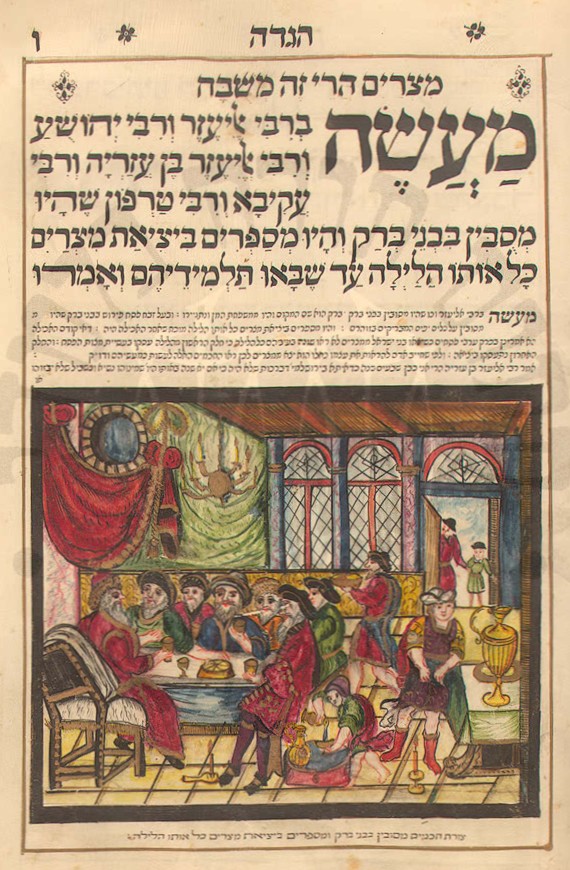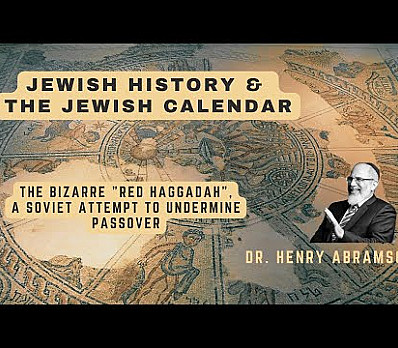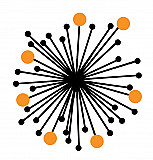{
"clip_details": {
"clip": {
"is_admin": 0,
"is_owner": 0,
"handle": "clp97c6eff2e11dc69c012a86e220994aff1",
"title": "מעשה ברבי אליעזר",
"author": "Ariel Irwin",
"author_handle": "arielirwin",
"author_initials": "AI",
"covertext": "Interesting historical context of the Rabbis' seder at http://thorn.cc/faffle/node/8",
"user_image": "",
"user_image_original": "",
"body": "<p>Interesting historical context of the Rabbis' seder at http://thorn.cc/faffle/node/8</p>",
"cliptype": "image",
"clipsource": "the illuminated Ms. 445 Hamburg megillah",
"featured": 0,
"featuredIn": null,
"is_public": 1,
"is_published": 1,
"media": {
"image": "https://assets.haggadot.com/clips/8364/2010-06-21_Haggadah.jpg",
"audio": null,
"video": null
},
"thumbnail": "https://assets.haggadot.com/clips/8364/conversions/2010-06-21_Haggadah-cover.jpg",
"clip_section": [
{
"haggadah_section": "Maggid - Beginning",
"slug": "maggid-beginning"
}
],
"likes": 0,
"downloads": 281,
"tags": [],
"themes": [],
"language": "0",
"is_bookmarked": "0",
"is_liked": 0,
"meta_tags": {
"title": "מעשה ברבי אליעזר | Passover haggadah by Ariel Irwin",
"description": "Our simple platform allows you to create a custom Passover Haggadah, with access to unique content contributed by our community. Find artwork, family",
"keywords": "",
"og:type": "article",
"og:url": "https://www.haggadot.com/clip/clp97c6eff2e11dc69c012a86e220994aff1",
"og:title": "מעשה ברבי אליעזר | Passover haggadah by Ariel Irwin",
"og:description": "Our simple platform allows you to create a custom Passover Haggadah, with access to unique content contributed by our community. Find artwork, family",
"og:image": "https://assets.haggadot.com/clips/8364/conversions/2010-06-21_Haggadah-cover.jpg"
}
}
},
"contributed_by": {
"author": "Ariel Irwin",
"handle": "arielirwin",
"author_initials": "AI",
"total_books": 4,
"total_clips": 7,
"total_followers": 0,
"is_following": 0
},
"user_book": null,
"clips_by_author": [
{
"clip": {
"is_admin": 0,
"is_owner": 0,
"handle": "survival-jewish-people",
"title": "Survival of the Jewish People",
"author": "Ariel Irwin",
"author_handle": "arielirwin",
"author_initials": "AI",
"covertext": "Acknowledging attempts to destroy the Jewish people in history and today and appreciating God's saving of His people thr...",
"user_image": "",
"user_image_original": "",
"body": "<p>Acknowledging attempts to destroy the Jewish people in history and today and appreciating God's saving of His people throughout history. </p>",
"cliptype": "image",
"clipsource": "http://masortiworld.org/sites/default/files/4ways-English.pdf",
"featured": 0,
"featuredIn": null,
"is_public": 1,
"is_published": 1,
"media": {
"image": "https://assets.haggadot.com/clips/164080/Survival-of-the-Jewish-people.jpg",
"audio": null,
"video": null
},
"thumbnail": "https://assets.haggadot.com/clips/164080/conversions/Survival-of-the-Jewish-people-cover.jpg",
"clip_section": [
{
"haggadah_section": "-- Exodus Story",
"slug": "exodus-story"
}
],
"likes": 0,
"downloads": 257,
"tags": [],
"themes": [],
"language": "0",
"is_bookmarked": "0",
"is_liked": 0,
"meta_tags": {
"title": "Survival of the Jewish People | Passover haggadah by Ariel Irwin",
"description": "Our simple platform allows you to create a custom Passover Haggadah, with access to unique content contributed by our community. Find artwork, family",
"keywords": "",
"og:type": "article",
"og:url": "https://www.haggadot.com/clip/survival-jewish-people",
"og:title": "Survival of the Jewish People | Passover haggadah by Ariel Irwin",
"og:description": "Our simple platform allows you to create a custom Passover Haggadah, with access to unique content contributed by our community. Find artwork, family",
"og:image": "https://assets.haggadot.com/clips/164080/conversions/Survival-of-the-Jewish-people-cover.jpg"
}
}
},
{
"clip": {
"is_admin": 0,
"is_owner": 0,
"handle": "exodus-story-lego",
"title": "Exodus story in LEGO",
"author": "Ariel Irwin",
"author_handle": "arielirwin",
"author_initials": "AI",
"covertext": "Sefer Shemot illustrated through LEGOs",
"user_image": "",
"user_image_original": "",
"body": "\n\n\n\n<p>Sefer Shemot illustrated through LEGOs</p>",
"cliptype": "image",
"clipsource": "http://www.bricktestament.com/exodus/",
"featured": 1,
"featuredIn": {
"title": "Comedy Seder",
"slug": "comedy-seder",
"author": "Haggadot"
},
"is_public": 1,
"is_published": 1,
"media": {
"image": "https://assets.haggadot.com/clips/164081/Lego-Splitting-of-the-sea.jpg",
"audio": null,
"video": null
},
"thumbnail": "https://assets.haggadot.com/clips/164081/conversions/Lego-Splitting-of-the-sea-cover.jpg",
"clip_section": [
{
"haggadah_section": "-- Exodus Story",
"slug": "exodus-story"
}
],
"likes": 0,
"downloads": 477,
"tags": [
{
"tag": "Pop Culture",
"slug": "pop-culture"
}
],
"themes": [],
"language": "0",
"is_bookmarked": "0",
"is_liked": 0,
"meta_tags": {
"title": "Exodus story in LEGO | Passover haggadah by Ariel Irwin",
"description": "Our simple platform allows you to create a custom Passover Haggadah, with access to unique content contributed by our community. Find artwork, family",
"keywords": "",
"og:type": "article",
"og:url": "https://www.haggadot.com/clip/exodus-story-lego",
"og:title": "Exodus story in LEGO | Passover haggadah by Ariel Irwin",
"og:description": "Our simple platform allows you to create a custom Passover Haggadah, with access to unique content contributed by our community. Find artwork, family",
"og:image": "https://assets.haggadot.com/clips/164081/conversions/Lego-Splitting-of-the-sea-cover.jpg"
}
}
},
{
"clip": {
"is_admin": 0,
"is_owner": 0,
"handle": "charoset-why-dont-we-recite-beracha",
"title": "Charoset: Why Don't we Recite a Beracha?",
"author": "Ariel Irwin",
"author_handle": "arielirwin",
"author_initials": "AI",
"covertext": "Hebrew text & sources in PDF - link aboveThe Mishna (Pesachim 114a) lists charoses among the matza, maror and other...",
"user_image": "",
"user_image_original": "",
"body": "<p>Hebrew text & sources in PDF - link above</p><p>The Mishna (Pesachim 114a) lists charoses among the matza, maror and other items placed on the table as part of the Pesach seder. However, the Mishna also records a difference of opinion as to the status of the charoses. According to R. Elazar B’Rebi Tzadok, charoses constitutes a mitzva, just as the other components of the seder ritual. However, the Tanna Kamma rules that there is no mitzva of charoses per se. Rather, the Gemara (116a) explains that it is present at the table so that maror may be dipped in the charoses, “mishum kapa.” Namely, the charoses neutralizes harmful contaminants that may be present in the maror. </p><p>Rambam, in his Commentary on the Mishna, states: R. [Elazar B’Rebi] Tzadok who rules that charoses is a mitzva would require one to recite the blessing, “[He] who has sanctified us with his mitzvos and commanded us on the eating of charoses.” This is not the common practice.</p><p>Rambam, Commentary on the Mishna, Pesachim 10:3</p><p> According to Rambam’s Commentary on the Mishna, a natural extension of R. Elazar B’Rebi Tzadok’s opinion is that an additional beracha must be recited on charoses, “al achilas charoses.” This follows the pattern of matza and maror and other mitzvos that are fulfilled when one eats certain foods.2 Rambam concludes by stating that normative halacha is not in accordance with R. Elazar B’Rebi Tzadok, seemingly because our text of the Haggadah does not include a blessing for charoses, indicating that common practice follows the ruling of the Tanna Kama.</p><p>However, in Mishneh Torah, Rambam states as follows:</p><p>Charoses is a mitzva ordained by the Rabbis to commemorate the mortar used [by the Jewish people] when</p><p>they were enslaved in Egypt. How is it made? One takes dates or dried figs or raisins or the like and crushes them. Vinegar and spices are added in the way that mortar is mixed with straw. Charoses is brought to the table on the nights of Pesach.</p><p>Hilchos Chametz U’Matza 7:11</p><p>This ruling stands in contradistinction with the words of Rambam in his Commentary on the Mishna. In Mishneh Torah, Rambam codifies the view of R. Elazar B’Rebi Tzadok by stating that charoses is deemed a mitzva. Moreover, in Mishneh Torah, Rambam makes no mention of a beracha for charoses, whereas his Commentary on the Mishna identifies the blessing as a logical extension of R. Elazar B’Rebi Tzadok’s opinion.3</p><p>Rav Soloveitchik explained that Rambam in Mishneh Torah, in fact, follows the opinion of R. Elazar B’Rebi Tzadok. However, in order to understand why there is no beracha recited, we must understand the nature of the mitzva of charoses. Indeed, eating charoses or dipping maror in charoses are not mitzvos in the same formal sense applied to the eating of matza or maror.</p><p>However, there is a mitzva to place charoses on the seder table because of the symbolic significance of zecher la’teet, a reminder of the mortar used by the Jewish people during the slavery in Egypt. For this reason, Rambam emphasizes its placement at the table when he lists the components of the seder at the very beginning of his discussion of the seder in Chapter 7 of Hilchos Chametz U’Matza. This serves as the primary designation of the role of charoses at the seder. He describes the dipping of the maror in charoses only later in Mishneh Torah when he expands upon the protocol of the mitzvos of the seder in Chapter 8. The purpose of dipping maror in charoses is merely to establish a connection between the charoses and the meal in which it is eaten. Its presence at the table as a zecher la’teet is actualized through this incorporation into the seuda (festive meal) of the seder night.</p><p>The Rav understood Rambam’s omission of the beracha for charoses in light of this explanation. As a rule, Chazal instituted blessings for mitzvos only in the context of a ma’aseh mitzva (an action used to perform a mitzva). In other words, when one fulfills a mitzva without performing a specific, prescribed action, no beracha is recited.4 Therefore, even according to R. Elazar B’Rebi Tzadok, Rambam rules that no beracha is said. The mitzva of charoses is achieved simply through its presence at the seuda. Dipping the maror is only a vehicle through which halacha recognizes the charoses’ association with the seder; it is not a ma’aseh mitzva in its own right. Rav Soloveitchik demonstrated that the aforementioned principle of birchos hamitzvos is manifest in other areas of halacha, as well. For example, Tosafos cite the opinion of Behag (Ba’al Halachos Gedolos): Halachos Gedolos ruled that if one missed a day of counting the omer, he should no longer continue counting because we require “complete” [counting]. This opinion is very puzzling and should not be accepted.</p><p>Tosafos, Menachos 66a</p><p>פסק בהלכות גדולות שאם הפסיק יום</p><p>אחד ולא ספר שוב אינו סופר משום</p><p>דבעיא תמימות ותימה גדולה הוא ולא</p><p>יתכן.</p><p>תוספות, מנחות סו.</p><p>According to Behag, if one omits counting one of the 49 days of the omer, the mitzva can no longer be fulfilled. Apparently, Behag views sefiras ha’omer as one mitzva with 49 requisite components. Pri Megadim (O.C. 489:13) questions Behag’s opinion based on our practice to make a separate beracha on each night of the omer. Seemingly, the institution of individual berachos indicates that we fulfill 49 individual mitzvos, contrary to Behag’s approach.</p><p>However, the Rav resolved Behag’s opinion based on the above rule. We saw from charoses that a beracha is not recited in the context of a kiyum mitzva (fulfillment of a mitzva) in the absence of a ma’aseh mitzva. Thus, it is the ma’aseh mitzva that is the impetus for the recitation of a beracha. A beracha can be recited in the context of a ma’aseh mitzva, even when it does not constitute a kiyum mitzva. Even Behag agrees that each night of the omer affords the opportunity to perform a ma’aseh mitzva by counting the omer. While Behag believes that no kiyum mitzva exists until all 49 days have passed, a beracha can indeed be recited each time one counts the omer. The beracha is on the ma’aseh mitzva.5</p><p>5</p>",
"cliptype": "text",
"clipsource": "http://download.yutorah.org/2013/1053/Pesach_To_Go_-_5773_Rabbi_Schachter.pdf",
"featured": 0,
"featuredIn": null,
"is_public": 1,
"is_published": 1,
"media": {
"image": null,
"audio": null,
"video": null
},
"thumbnail": null,
"clip_section": [
{
"haggadah_section": "Maror",
"slug": "maror"
}
],
"likes": 0,
"downloads": 334,
"tags": [],
"themes": [],
"language": "0",
"is_bookmarked": "0",
"is_liked": 0,
"meta_tags": {
"title": "Charoset: Why Don't we Recite a Beracha? | Passover haggadah by Ariel Irwin",
"description": "Our simple platform allows you to create a custom Passover Haggadah, with access to unique content contributed by our community. Find artwork, family",
"keywords": "",
"og:type": "article",
"og:url": "https://www.haggadot.com/clip/charoset-why-dont-we-recite-beracha",
"og:title": "Charoset: Why Don't we Recite a Beracha? | Passover haggadah by Ariel Irwin",
"og:description": "Our simple platform allows you to create a custom Passover Haggadah, with access to unique content contributed by our community. Find artwork, family",
"og:image": ""
}
}
},
{
"clip": {
"is_admin": 0,
"is_owner": 0,
"handle": "sanctity-home-message-korban-pesach-rabbi-zvi-sobolofsky",
"title": "The Sanctity of the Home - The Message of the Korban Pesach by Rabbi Zvi Sobolofsky",
"author": "Ariel Irwin",
"author_handle": "arielirwin",
"author_initials": "AI",
"covertext": "The Sanctity of the Home - The Message of the Korban Pesach by Rabbi Zvi Sobolofsky Korban Pesach vs. other korbanot in...",
"user_image": "",
"user_image_original": "",
"body": "<p>The Sanctity of the Home - The Message of the Korban Pesach by Rabbi Zvi Sobolofsky</p>\n\n<p>Korban Pesach vs. other korbanot in terms of centrality of the home.</p>\n",
"cliptype": "text",
"clipsource": "YU Pesach-to-Go 5766",
"featured": 0,
"featuredIn": null,
"is_public": 1,
"is_published": 1,
"media": {
"image": null,
"audio": null,
"video": null
},
"thumbnail": null,
"clip_section": [
{
"haggadah_section": "-- Cup #2 & Dayenu",
"slug": "cup-2-amp-dayenu"
}
],
"likes": 0,
"downloads": 274,
"tags": [],
"themes": [],
"language": "0",
"is_bookmarked": "0",
"is_liked": 0,
"meta_tags": {
"title": "The Sanctity of the Home - The Message of the Korban Pesach by Rabbi Zvi Sobolofsky | Passover haggadah by Ariel Irwin",
"description": "Our simple platform allows you to create a custom Passover Haggadah, with access to unique content contributed by our community. Find artwork, family",
"keywords": "",
"og:type": "article",
"og:url": "https://www.haggadot.com/clip/sanctity-home-message-korban-pesach-rabbi-zvi-sobolofsky",
"og:title": "The Sanctity of the Home - The Message of the Korban Pesach by Rabbi Zvi Sobolofsky | Passover haggadah by Ariel Irwin",
"og:description": "Our simple platform allows you to create a custom Passover Haggadah, with access to unique content contributed by our community. Find artwork, family",
"og:image": ""
}
}
},
{
"clip": {
"is_admin": 0,
"is_owner": 0,
"handle": "regelsonforst-haggadah-cover",
"title": "Regelson/Forst Haggadah Cover",
"author": "Ariel Irwin",
"author_handle": "arielirwin",
"author_initials": "AI",
"covertext": "",
"user_image": "",
"user_image_original": "",
"body": "",
"cliptype": "image",
"clipsource": "http://www.pitts.emory.edu/collections/selectholdings/haggadah.cfm",
"featured": 0,
"featuredIn": null,
"is_public": 1,
"is_published": 1,
"media": {
"image": "https://assets.haggadot.com/clips/8363/red_blue.jpg",
"audio": null,
"video": null
},
"thumbnail": "https://assets.haggadot.com/clips/8363/conversions/red_blue-cover.jpg",
"clip_section": [
{
"haggadah_section": null,
"slug": null
}
],
"likes": 0,
"downloads": 260,
"tags": [],
"themes": [],
"language": "0",
"is_bookmarked": "0",
"is_liked": 0,
"meta_tags": {
"title": "Regelson/Forst Haggadah Cover | Passover haggadah by Ariel Irwin",
"description": "Our simple platform allows you to create a custom Passover Haggadah, with access to unique content contributed by our community. Find artwork, family",
"keywords": "",
"og:type": "article",
"og:url": "https://www.haggadot.com/clip/regelsonforst-haggadah-cover",
"og:title": "Regelson/Forst Haggadah Cover | Passover haggadah by Ariel Irwin",
"og:description": "Our simple platform allows you to create a custom Passover Haggadah, with access to unique content contributed by our community. Find artwork, family",
"og:image": "https://assets.haggadot.com/clips/8363/conversions/red_blue-cover.jpg"
}
}
},
{
"clip": {
"is_admin": 0,
"is_owner": 0,
"handle": "magid-outline",
"title": "Magid Outline",
"author": "Ariel Irwin",
"author_handle": "arielirwin",
"author_initials": "AI",
"covertext": "The breakup here is debatable, and involves interpretation at the end. However, it should be a useful resource to mainta...",
"user_image": "",
"user_image_original": "",
"body": "<p style=\"text-align:left;\"><span>The breakup here is debatable, and involves interpretation at the end. However, it should be a useful resource to maintain context as one goes through Magid.</span></p><p style=\"text-align:center;\"><span>Magid</span></p><p><strong><span>1.<span> </span></span></strong><span>Intro</span></p><p><span>a.<span> </span></span><span>הָא לַחְמָא עַנְיָא</span><span> – invite guests</span></p><p><span>b.<span> </span></span><span>מַה נִּשְּׁתַּנָה</span></p><p><span>c.<span> </span></span><span>The mitzvah of </span><span>סיפור יציאת מצרים</span></p><p><span><span> </span>i.<span> </span></span><span>עֲבָדִים הָיִינוּ</span></p><p><span><span> </span>ii.<span> </span></span><span>Rabbis in </span><span>בני ברק</span></p><p><span><span> </span>iii.<span> </span></span><span>רַבִּי אֶלְעָזָר בֶּן עֲזַרְיָה</span><span>– mitzvah to do </span><span>סיפור </span><span> </span><span>at night</span></p><p><span><span> </span>iv.<span> </span></span><span>Teaching the 4 sons</span></p><p><span><span> </span>v.<span> </span></span><span>יָכוֹל מֵרֹאשׁ חֹדֶשׁ</span><span>– mitzvah to do </span><span>סיפור </span><span> </span><span>at seder (not all of Nisan)</span></p><p><strong><span>2.<span> </span></span></strong><span>Genut to Shevach</span></p><p><span>a.<span> </span></span><span>The forefathers</span></p><p><span><span> </span>i.<span> </span></span><span>מִתְּחִלָּה עוֹבְדֵי עֲבוֹדָה זָרָה הָיוּ אֲבוֹתֵינוּ</span></p><p><span><span> </span>ii.<span> </span></span><span>The forefathers inherit the land; Yaakov goes down to Egypt</span></p><p><span><span> </span>iii.<span> </span></span><span>בְרִית בֵּין הַבְּתָרִים</span></p><p><span>b.<span> </span></span><span>וְהִיא שֶׁעָמְדָה</span></p><p><span>c.<span> </span></span><span>Egypt story: </span><span>דברים כו: ה-ח</span><span>. Each pasuk is analyzed word by word to derive the full details of the story. (</span><span>Text is taken from the Kohen’s speech when he gives the bikkurim.)</span></p><p><span><span> </span>i.<span> </span></span><span>אֲרַמִּי אֹבֵד אָבִי, וַיֵּרֶד מִצְרַיְמָה וַיָּגָר שָׁם בִּמְתֵי מְעָט, וַיְהִי שָׁם לְגוֹי גָּדוֹל, עָצוּם וָרָב</span><span>.</span></p><p><span><span> </span>ii.<span> </span></span><span>וַיָּרֵעוּ אֹתָנוּ הַמִּצְרִים וַיְעַנּוּנוּ, וַיִתְּנוּ עָלֵינוּ עֲבֹדָה קָשָׁה</span><span>.</span></p><p><span><span> </span>iii.<span> </span></span><span>וַנִּצְעַק אֶל יְיָ אֱלֹהֵי אֲבֹתֵינוּ, וַיִּשְׁמַע יְיָ אֶת קֹלֵנוּ, וַיַּרְא אֶת עָנְיֵנוּ וְאֶת עֲמָלֵנוּ וְאֶת לַחֲצֵנוּ</span><span>.</span></p><p><span><span> </span>iv.<span> </span></span><span>וַיּוֹצִאֵנוּ יְיָ מִמִצְרַיִם בְּיָד חֲזָקָה וּבִזְרֹעַ נְטוּיָה, וּבְמֹרָא גָּדֹל, וּבְאֹתוֹת <strong>וּבְמֹפְתִים</strong></span><span>.</span></p><p><span>1.<span> </span></span><span>10 plagues</span></p><p><span>2.<span> </span></span><span>Recounting of plagues</span></p><p><span>d.<span> </span></span><span>Dayenu </span></p><p><strong><span>3.<span> </span></span></strong><span>Mitzvot of the night</span></p><p><span>a.<span> </span></span><span>Pesach</span></p><p><span>b.<span> </span></span><span>Matza</span></p><p><span>c.<span> </span></span><span>Maror</span></p><p><span>d.<span> </span></span><span>בְּכָל דּוֹר וָדוֹר חַיָּב אָדָם לִרְאוֹת אֶת עַצְמוֹ כְּאִלּוּ הוּא יָצָא מִמִּצְרַיִם</span></p><p><span>e.<span> </span></span><span>First half of </span><span>הלל</span></p><p><strong><span>4.<span> </span></span></strong><span>ברוך אתה ה' גאל ישראל</span></p><p><strong><span>5.<span> </span></span></strong><span>2nd cup</span></p>",
"cliptype": "text",
"clipsource": "Original",
"featured": 0,
"featuredIn": null,
"is_public": 1,
"is_published": 1,
"media": {
"image": null,
"audio": null,
"video": null
},
"thumbnail": null,
"clip_section": [
{
"haggadah_section": "Maggid - Beginning",
"slug": "maggid-beginning"
}
],
"likes": 0,
"downloads": 304,
"tags": [],
"themes": [],
"language": "0",
"is_bookmarked": "0",
"is_liked": 0,
"meta_tags": {
"title": "Magid Outline | Passover haggadah by Ariel Irwin",
"description": "Our simple platform allows you to create a custom Passover Haggadah, with access to unique content contributed by our community. Find artwork, family",
"keywords": "",
"og:type": "article",
"og:url": "https://www.haggadot.com/clip/magid-outline",
"og:title": "Magid Outline | Passover haggadah by Ariel Irwin",
"og:description": "Our simple platform allows you to create a custom Passover Haggadah, with access to unique content contributed by our community. Find artwork, family",
"og:image": ""
}
}
}
],
"clip_remake_history": 0,
"meta_tags": {
"title": "מעשה ברבי אליעזר | Passover haggadah by Ariel Irwin",
"description": "Our simple platform allows you to create a custom Passover Haggadah, with access to unique content contributed by our community. Find artwork, family",
"keywords": "",
"og:type": "article",
"og:url": "https://www.haggadot.com/clip/clp97c6eff2e11dc69c012a86e220994aff1",
"og:title": "מעשה ברבי אליעזר | Passover haggadah by Ariel Irwin",
"og:description": "Our simple platform allows you to create a custom Passover Haggadah, with access to unique content contributed by our community. Find artwork, family",
"og:image": "https://assets.haggadot.com/clips/8364/conversions/2010-06-21_Haggadah-cover.jpg"
}
}
מעשה ברבי אליעזר
Haggadah Section: Maggid - Beginning

Interesting historical context of the Rabbis' seder at http://thorn.cc/faffle/node/8
Source:
the illuminated Ms. 445 Hamburg megillah
Inspired to create
your own Haggadah?
Make your own Haggadah and share with other Seder lovers around the world
Have an idea
for a clip?
People like you bring their creativity to Haggadot.com when they share their ideas in a clip
Support Us
with your donation
Help us build moments of meaning and connection through
home-based Jewish rituals.
OUR TOP CONTRIBUTORS
Passover Guide
Hosting your first Passover Seder? Not sure what food to serve? Curious to
know more about the holiday? Explore our Passover 101 Guide for answers
to all of your questions.






















